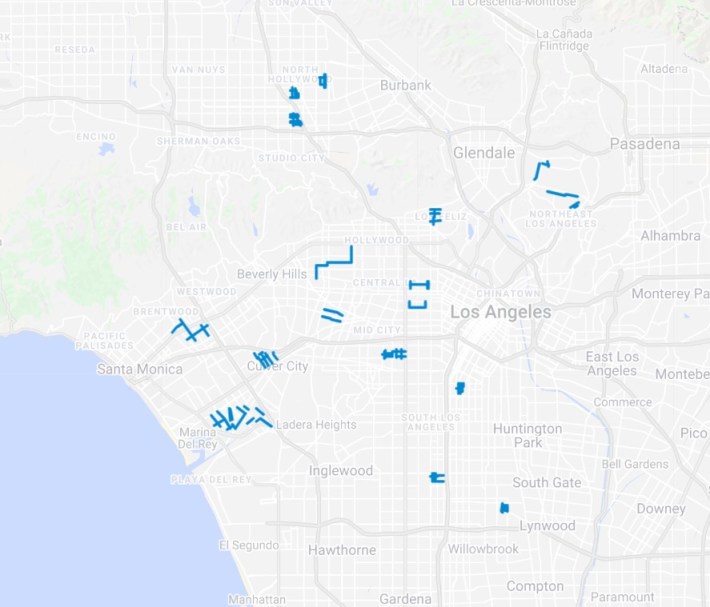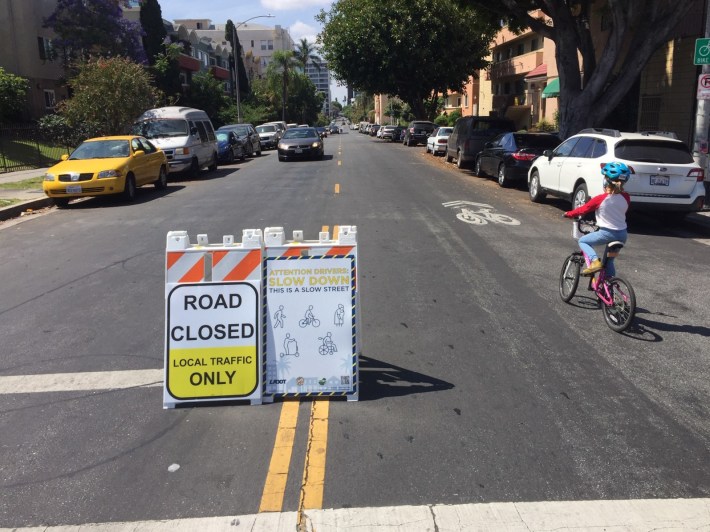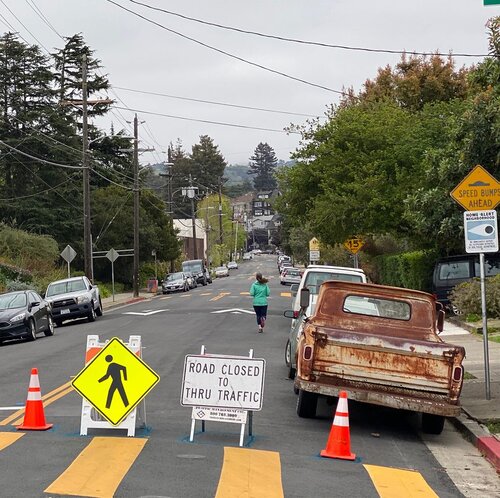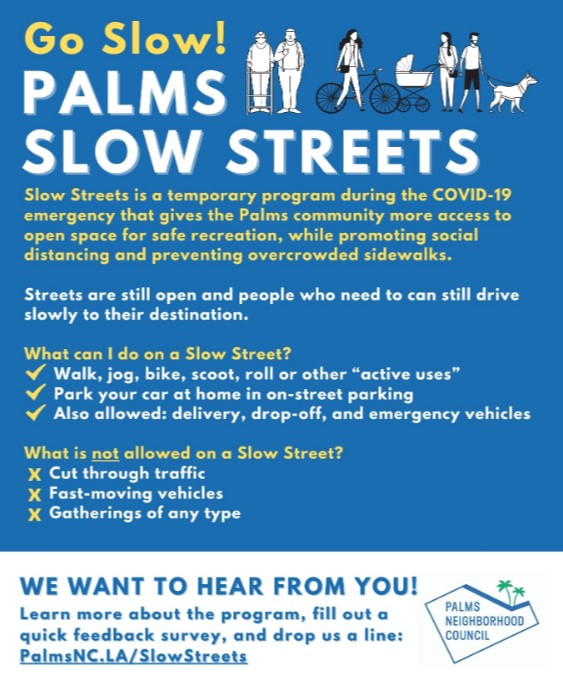The city of Los Angeles Transportation Department (LADOT) is rolling a few new Slow Streets each week. New installations recently popped up in Los Feliz and Palms.
The program is theoretically intended to make streets safer for walking and bicycling, while folks are staying at home under COVID-19 restrictions. L.A. City has nearly 20 Slow Streets clusters implemented to date. Find all of L.A. City's Slow Streets via a map at Streets for All, the non-profit that helped push the city to get the program started.

In today's episode, L.A. Podcast co-host Scott Frazier mentions visiting a slow street in Los Feliz, "cars are just buzzing by... I don't feel safe." Co-host Alissa Walker expresses similar criticism of the city's Slow Street on 4th Street in Koreatown, which SBLA was also critical of.
Similar (or similarly ineffective) Slow Streets programs are also taking place in Pasadena, unincorporated L.A. County, and Glendale.
Sadly, all of these Southern California programs seem to be slapping down a couple sandwich boards in the streets mid-line stripe. L.A. City's feature English-only signage declaring, "SLOW STREET" and "ROAD CLOSED – LOCAL TRAFFIC ONLY." Does anyone at LADOT really trust that L.A. drivers will obey and act like they're sharing space with families and kids?

Cities like Oakland and Seattle actually put the sandwich board in the car lane. This may not solve everything, but it does at least send a stronger signal to drivers that they should probably drive around instead of cutting through.

Readers - what's your take on Southern California Slow Streets? Are they working for you, your family, your neighborhood? What would you like to see?







